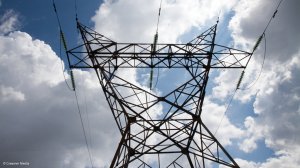Following calls by civil society organisations, this week, to scrap the electricity war room, National Treasury deputy director-general Malcolm Simpson on Wednesday defended the progress that had been made since the war room’s inception in December.
Unpacking the initiatives of the war room on the second day of the four-day National Civil Society Conference, in Booysens, Johannesburg, Simpson, who was also a war room participant, said Eskom had accelerated the implementation of Cabinet’s five-point turnaround plan for the utility, which was approved in December.
The temporary war room, established to increase the country’s electricity supply, while stabilising the strained national grid, was not just an Eskom-focused task team, but rather an initiative to mitigate the overall energy issues experienced in the country, said Eskom customer services operations GM Marion Hughes.
The embattled utility, which boasted just over 40 000 employees, was responsible for the power generation and supply of electricity to five-million direct customers, as well as 226 local and 44 district municipalities and eight metropolitans.
Despite a generating fleet of over 42 000 MW – 37 297 MW from several coal-fired power stations and one nuclear power station – Eskom was continually falling short of the country’s 30 000 MW peak demand, with the tight system remaining at risk from any incident, including weather and unplanned maintenance, that could escalate rapidly.
However, Hughes assured that Eskom was working diligently to formulate the best plans to ensure minimal load-shedding, pointing to the avoidance of the unpopular mitigating measure for the fifth consecutive day.
The turnaround plan, which saw the war room participants meet every Friday, aimed to improve Eskom’s maintenance and operation practices, increase its cogeneration capacity, source gas for additional power generation, expedite the use of other independent power producers (IPPs) and improve demand-side management.
Eskom’s finances and procurement, skills requirements and regulatory issues were also integrated into the strategy.
The utility’s move to improve its maintenance programmes comprised the reduction of partial load losses, the placement of quality resources at power stations, the improvement of its maintenance contract management, the monitoring of critical spares stock for planned outages, the weekly monitoring of the skills of major contractors, the execution of emergency procurement procedures for maintenance, ensuring fewer delays to planned implementation and the tracking of maintenance through key performance indicators.
Turning to the much-delayed new build programme, Simpson explained that Medupi’s Unit 6 would reach full load by the end of June, while the group was accelerating the unit 1 to 5 completions as it worked to resolved labour issues and grievances.
While Kusile had not been much of a focus point amid the urgency of Medupi, Eskom was committed to fast-tracking the project, with Unit 1’s leak test completed in May.
Further, focus remained on improving coal supply and quality, with the development of short-, medium- and long-term solutions under way.
Eskom also pointed out that it had signed the extensions for several cogeneration contracts this year to ensure another three-year supply of 1 390 MW.
The Department of Energy was pursuing additional, long-term cogeneration supply leveraging IPPs.
In the gas-to-power space, Eskom would pursue short- to medium-term supply of 500 MW to 2 000 MW to bolster capacity, along with the acceleration of the renewable-energy programme’s window four and the redesign of window five for an additional 7 300 MW of power.
In addition, several coal base-load procurement projects for 2 500 MW and other small 1 MW to 5 MW power generation programmes for 50 MW of the allocated 200 MW procurement have been established to increase IPP participation.
Meanwhile, government and Eskom planned to engage the large energy intensive users to explore efficiencies with attached programmes to enable improvements and a reduction of energy use without limiting productivity.
Improving Eskom’s liquidity and stakeholder engagement would underpin the initiatives of the war room, with a financial task team set up between the National Treasury, the departments of Public Enterprises and Energy and Eskom to develop a roadmap towards an investment grade status, tackle short-term liquidity constraints, recover municipal arrears and ensure long-term financial sustainability.
WAR ROOM ALTERNATIVES
National Treasury and Eskom were speaking in the face criticism of the war room by trade unions and civil society, which had moved to establish six alternative electricity “peace rooms” that were open as opposed to Eskom’s closed war room.
The first roundtable discussions kicked off this week at the National Civil Society Conference, to develop draft resolutions to mitigate South Africa’s prevalent, persistent power shortages.
The discussions of the six rooms included load-shedding, where concepts on how to deal with load-shedding would be tabled, and finances, which would revolve around Eskom’s key cost drivers, rising costs and the prevention of a financial meltdown.
The room covering the restructuring of the electricity industry would examine whether public–private competition would be viable and whether there was a role for the private sector in the electricity supply industry.
The fourth room, encompassing Eskom’s “environmental justice”, would review the utility’s environmental track record and propose measures and interventions that would ensure environmental matters were not overshadowed by the urgency in dealing with the electricity crisis.
The final two panels would pursue solutions for electricity supply, grid augmentation, new sources of energy and the new build programme and the democratisation of Eskom and the reversal of its corporatisation.
EMAIL THIS ARTICLE SAVE THIS ARTICLE
To subscribe email subscriptions@creamermedia.co.za or click here
To advertise email advertising@creamermedia.co.za or click here











